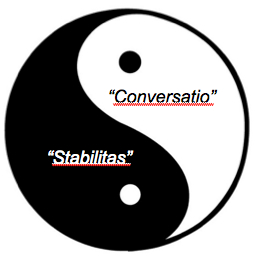Earlier this month our church sponsored its annual “Jazz Sunday,” and I thought about the jazz-like nature of excellent leaders and organizations. I am always struck by the  camaraderie, communication and creativity of jazz performances. Ensemble members readily share the lead and support one another; their flexibility and cross-training would be the envy of most teams. Our Sunday’s clarinetist and bass players switched places without missing a beat; the trombonist seemed equally at home with his trombone, coronet or any kind of trumpet. (And on other occasions the cello and more!) Communication was seamless; when to start, when to shift and when to end were communicated by exchange of glances and subtle hand signals. Members of the jazz ensemble had played together a number of years, clearly enjoyed making music together and engaged their audience.
camaraderie, communication and creativity of jazz performances. Ensemble members readily share the lead and support one another; their flexibility and cross-training would be the envy of most teams. Our Sunday’s clarinetist and bass players switched places without missing a beat; the trombonist seemed equally at home with his trombone, coronet or any kind of trumpet. (And on other occasions the cello and more!) Communication was seamless; when to start, when to shift and when to end were communicated by exchange of glances and subtle hand signals. Members of the jazz ensemble had played together a number of years, clearly enjoyed making music together and engaged their audience.
Mostly for me, jazz reflects the best kind of alignment in organizations – a combination of structure and discipline coupled with improvisation. There is always some underlying melody, arrangement or beat that is the foundation for jazz. Its distinctiveness, unique  value and “magic,” however, stem from improvisation; no performance is the same. Playing an arrangement note-by-note might sound OK, but wouldn’t be jazz; of course total improv, or everyone “doing his thing,” would also not be jazz, but more like noise. The foundation, or underlying arrangement, and improvisation must both be present for jazz. Likewise, the best kind of alignment in organizations is a combination of foundational principles and goals coupled with flexibility and spontaneity. Jim Collins reinforced this point in his and Jerry Porras’ book Built To Last (Harper Business, 1994.) Collins’ research demonstrated that companies with the combination of a strong core ideology (mission and core values) with adaptive mechanisms generated returns that were six times those of control companies. Saint Benedict was thirteen hundred years ahead of Collins when he posited that the strongest faith communities were a combination of the Latin stabilitas (what should not change) and conversatio (changeable, or open to conversation.)
value and “magic,” however, stem from improvisation; no performance is the same. Playing an arrangement note-by-note might sound OK, but wouldn’t be jazz; of course total improv, or everyone “doing his thing,” would also not be jazz, but more like noise. The foundation, or underlying arrangement, and improvisation must both be present for jazz. Likewise, the best kind of alignment in organizations is a combination of foundational principles and goals coupled with flexibility and spontaneity. Jim Collins reinforced this point in his and Jerry Porras’ book Built To Last (Harper Business, 1994.) Collins’ research demonstrated that companies with the combination of a strong core ideology (mission and core values) with adaptive mechanisms generated returns that were six times those of control companies. Saint Benedict was thirteen hundred years ahead of Collins when he posited that the strongest faith communities were a combination of the Latin stabilitas (what should not change) and conversatio (changeable, or open to conversation.)
The underlying arrangement of alignment’s “jazz” is why everyone knows, or should know, they are there – to achieve the organization’s mission and priority goals; its “beat” are the organization’s core values or principles. There should be no compromise on those scores. In today’s “VUCA” world (volatile, uncertain, changing and ambiguous,) how priority goals are achieved is where improvisation and diversity come in. As long as everyone agrees on their organization’s “3 Ps” – purpose, priorities and principles, results will be superior when performers can improvise. Performers can adapt as circumstances warrant and be creative meeting customer needs to achieve best possible outcomes. As the American journalist and women’s rights advocate Margaret Fuller put it: “Harmony exists in difference no less than in likeness, if only the same key note governs both parts.” Differences – in perspective, approach and method, are welcome so long as “the same key notes” – an organization’s purpose, principles and priorities are internalized.
To “jazz up” your organization and create this kind of alignment, pay attention to both your “key notes,” or foundation, and improvisation.
Here is how to make sure everyone is playing the same “key notes:”
- Craft a meaningful mission, or purpose statement, for your organization – why all of you are there. Be sure that it resonates with target customers, reflects your core capabilities and mirrors your brand.
- Articulate your organization’s core values – the basic principles that signal what behavior is most valued and that organization members can use as guides for best courses of action.
- Make sure that everyone knows your organization’s strategic and operational priorities (research shows that about 60% don’t,) and review goals that are set up and down the organization to assure alignment with those priorities.
- Communicate, communicate, communicate. From my experience, the maxim that we need to communicate something at least seven times in seven different ways for it to be understood is true. That applies to our “3 Ps:” purpose, principles and priorities.
- Examine your structure, systems and processes to assure that they reinforce your “3 Ps.” Pay particular attention to hiring, compensation, recognition, performance management and measurement practices. As Upton Sinclair said: “It’s hard to get someone to understand something when their salary depends on them not understanding it.”
To nurture improvisation:
- Give people freedom to do their jobs. Manage outcomes, not methods; don’t micromanage.
- Encourage experimentation and “play.” 3M and Google are both known for encouraging staff to devote some of their paid time pursuing whatever research project interests them.
- Give people chances to shine and to use their best strengths. Surveys consistently demonstrate that a major driver of engagement is having regular opportunities to do what we do best.
- Invest in education, training and development. Workers exposed to new thinking, updated methods and a wider world-view are better positioned for adapting to new and changing realities.
- Embrace diversity – of background, perspectives and points of view. Give people the tools for creating the “harmony that exists in differences,” including negotiation, consensus-building and dialog.
- Don’t over-specialize. Too much specialization restricts workforce flexibility and creates barriers that hinder collaboration.
- Get more comfortable with ambiguity. There is a time and place for everything, including answers. Very little, and less each day, is black and white; sometimes it’s better to live with a question than force an answer.
- Create a sense of community that is caring, supportive and collegial. Drive out fear and gamesmanship.
inTEgro makes a distinction between “alignment” the noun and “aligning” the verb, and we need both. We need alignment the noun – structure and discipline, to make sure that all are following the same key notes. We need aligning the verb, or improvisation, to nurture creativity and adaptability. We need to both “walk the talk” and “dance the dance.” That’s jazz.
Here are a few more resources for jazzing up your culture:
- Michael Gold’s “Jazz Impact” – Michael is an accomplished jazz musician who with his traveling jazz ensemble workshop helps organizations and leaders tap the power of jazz. Visit his web site at http://www.jazz-impact.com/
- “Leadership and All That Jazz” – An early inTEgro newsletter at http://tinyurl.com/l9ue4s2
- Max DePree’s Leadership Jazz (Currency / Doubleday, 1992) – Peter Drucker called this classic by Herman Miller’s founder “wisdom in action.”
“Jazz is restless. It won’t stay put and never will.”
(trombonist J. J. Johnson, 1988)
“The great jazz bassist and composer Charles Mingus once said, ‘You can’t improvise on nothing, man.’ Yes- a double negative- and he meant it. When we improvise together it is always about something.”
(Michael Gold, Jazz Impact)






